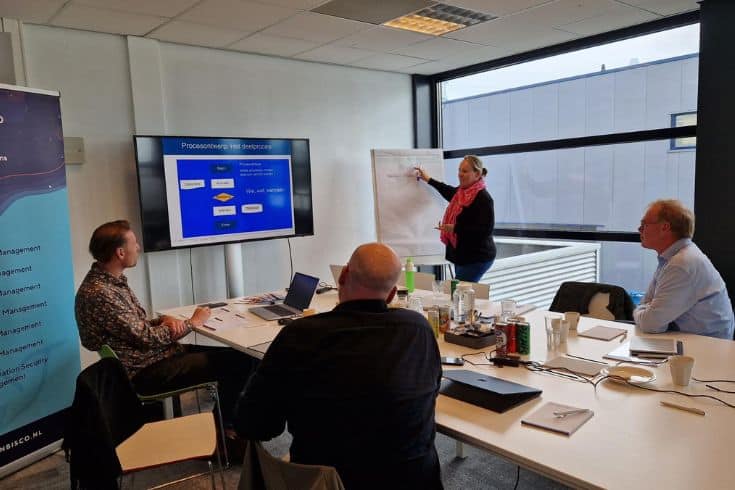
INBISCO QHSE Community
8 Oct 2024
At INBISCO, our many years of experience have given us a good idea of what can go wrong with a QHSE implementation. In this blog, we will therefore give you 5 tips to ensure that you successfully complete that QHSE implementation! So read on!

With our Management systems, we at INBISCO have gained a good insight into the obstacles that companies can encounter during QHSE implementation through our many years in the process industry and through close cooperation with our partners. Over the years, we have noticed a few crucial aspects that we believe not only contribute to a successful implementation of a QHSE Management System, but also to the successful maintenance and improvement of this QHSE culture over the years!
You may have heard this before, but communication is one of the most important aspects of a QHSE system. Without clear communication, constant feedback and especially transparent communication between everyone in the team/company, a well-functioning QHSE system cannot be set up. Everyone in a company has a different view of certain processes and these other angles are very valuable. Therefore, as a manager, try to encourage others to share their feedback and ideas and see this as an opportunity to improve your system and make it more effective!
Often managers are so busy focusing on completing their tasks and those of other employees that risk factors are overlooked. This is a shame and a major pitfall for successful QHSE implementation. By properly analyzing and mapping the possible risks in your company, you can distribute your goods/products more effectively and efficiently. Not only do you avoid risks that can cost you a lot of money and slow down your processes, but you also ensure that the working environment in your company is safe and organized. Nobody likes negative surprises, right?
The only way to gain insight into the success of your QHSE implementation and your QHSE culture is to regularly assess it and perform internal audits. This allows you to measure how well your QHSE system actually functions and you can perform analyses to see whether the system has an impact on your processes. This way you always have control over your system and certainty of the right insights into your progress.
One of the most difficult steps in implementing a QHSE system is changing the mindset of your company. You may have the right software now, but without the cooperation of your employees, your system is useless. Therefore, make sure that everyone in your company understands the software, knows how to use it and sees the vision of the software. As soon as one of these aspects is missing, the implementation becomes more difficult. So make sure that your employees are well trained and are constantly updated on new developments within your system. “I don’t quite get it” should be changed to “wow, this makes my work more efficient!”.
Finally, we will discuss the importance of developing a personal QHSE strategy for your company. Everyone knows more or less what a QHSE system can be used for, but every company does this in its own way. Therefore, when implementing your QHSE system, check carefully whether it fits in with the overall strategic direction of your company. By aligning the goals of your QHSE system with the goals of your company, you increase the chance of success. So make sure that everyone in your company knows how the QHSE system can help their work and help achieve the overall company goals. This way, everyone in your company has the same goals, there is no disagreement between management teams and you create clarity within your company.
Interested in how we at INBISCO make these steps a reality? Then take a look at our software!
Here you will find our latest blogs, events, online demonstrations and customer stories. Stay up to date with the latest developments and be inspired by practical examples in the field of quality, health, safety and environment.